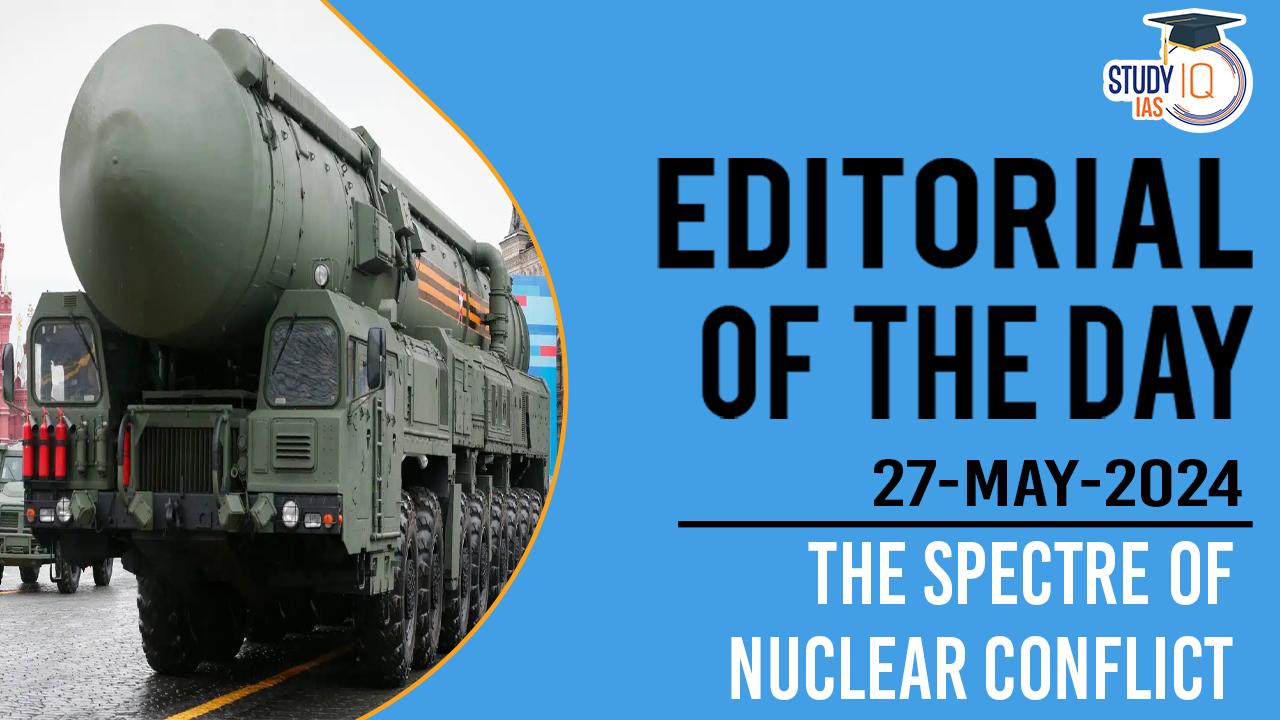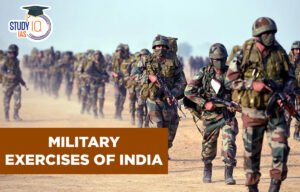Table of Contents
Context
- The world is witnessing a resurgence of nuclear threats, particularly in the wake of the Ukraine war and Russia’s increasing belligerence.
- Prominent leaders’ rhetoric often hides the truth, necessitating nations to discern the hidden meanings behind their statements.
Various Leaders’ Stances
Emmanuel Macron’s Apocalyptic Vision:
- French President Emmanuel Macron has warned of a potential nuclear conflict, describing a future marked by the danger of nuclear annihilation.
- His remarks, particularly concerning the Ukraine war and Russian President Vladimir Putin’s nuclear threats, have garnered significant attention in Europe.
- Macron’s emphasis on France’s substantial nuclear arsenal adds weight to his warnings. He plans to highlight these nuclear concerns at the European Political Community meeting in July.
Vladimir Putin’s Nuclear Stance:
- During the Victory Day Parade, Putin asserted that Russia’s nuclear forces are always on alert and warned against Western threats.
- In November 2023, Russia revoked its ratification of the Comprehensive Test Ban Treaty (CTBT), claiming it was to balance nuclear capabilities with the U.S., which never ratified the treaty.
- This move has been met with hostility from the international community, reversing the shift towards greater nuclear confidence.
China’s Preparedness
- China is advancing its nuclear capabilities, recently completing sea trials for its aircraft supercarrier equipped with electromagnetic catapults and building a fourth carrier.
Lessons from the U.S.-India Nuclear Deal
- India had not signed the Nuclear Proliferation Treaty (NPT) or the Comprehensive Test Ban Treaty (CTBT) and had conducted nuclear tests in 1998, leading to sanctions.
- Outcomes:
- The deal led to India separating its civilian and military nuclear programs, adhering to export control regulations, and accepting a voluntary moratorium on nuclear testing.
- TheS. amended its domestic laws, facilitating the Hyde Act and the 123 Agreements, and approached the Nuclear Suppliers Group (NSG) to ease nuclear restrictions on India.
- An India Specific Safeguards Agreement from the International Atomic Energy Agency (IAEA) gave India a status similar to a nuclear weapon state under the NPT.
- Significance of the Deal:
- The deal significantly transformed India-U.S. relations from technology denial to a major technology partnership.
- It led to new heights in economic and defence relations and made India an essential partner of the U.S. on regional and global issues.
- Key Takeaways:
- The U.S.-India nuclear deal demonstrates the power of diplomacy and compromise in resolving complex international disputes.
- Overcoming psychological barriers and building trust are crucial for improving relations between nations.
- Nuclear energy can be a valuable resource for peaceful purposes when managed responsibly and with appropriate safeguards.
| Non-Proliferation Treaty |
|
| Comprehensive Test Ban Treaty (CTBT) |
|
Conclusion
As the world grapples with the growing threat of nuclear conflict, the lessons learned from the U.S.-India nuclear deal offer a glimmer of hope. By prioritising diplomacy, building trust, and finding common ground, it may be possible to avert disaster and ensure a safer future for all.


 List of Military Exercises of India 2024...
List of Military Exercises of India 2024...
 India to Host First Global Conference on...
India to Host First Global Conference on...
 How Terror Networks Abuse Digital Tools
How Terror Networks Abuse Digital Tools





















